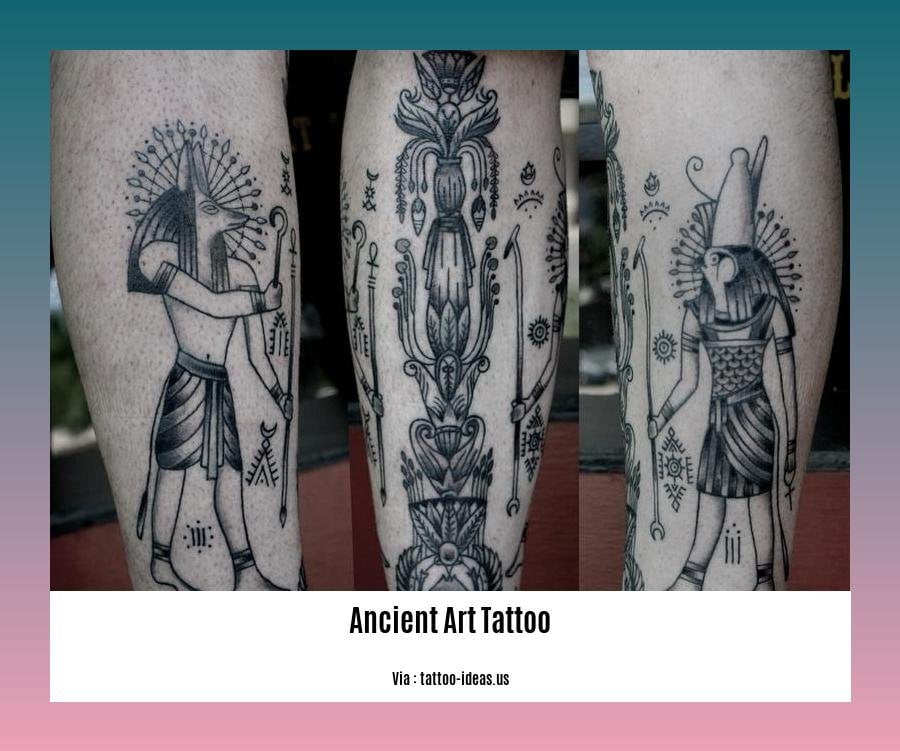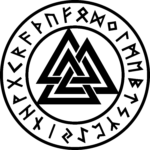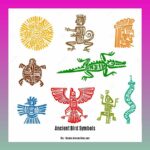Embark on a captivating journey through time as we unveil the enigmatic world of ancient art tattoos in [Unveiling the Enigmatic World of Ancient Art Tattoos: A Journey Through History and Symbolism]. Discover the intriguing stories behind the intricate designs and symbols that adorned the bodies of our ancestors. Dive into the historical significance, cultural influences, and techniques employed in these ancient expressions of art. Prepare to be mesmerized as we explore the artistry, social significance, and spiritual dimensions of ancient tattoos, gaining a deeper appreciation for our cultural heritage.
Key Takeaways:
Tattooing has been practiced for thousands of years, with evidence found on mummies, art, and archaeological records.
The oldest known tattooed mummies are Ötzi (3250 BCE) and two Egyptian mummies (3351-3017 BCE).
Tattooing was prevalent among the Austronesian people, particularly those associated with headhunting.
In modern times, starting in the early 2000s, tattoos have regained popularity among the military as a means of expressing social and political views.
Ancient Art Tattoo: A Journey Through History and Symbolism
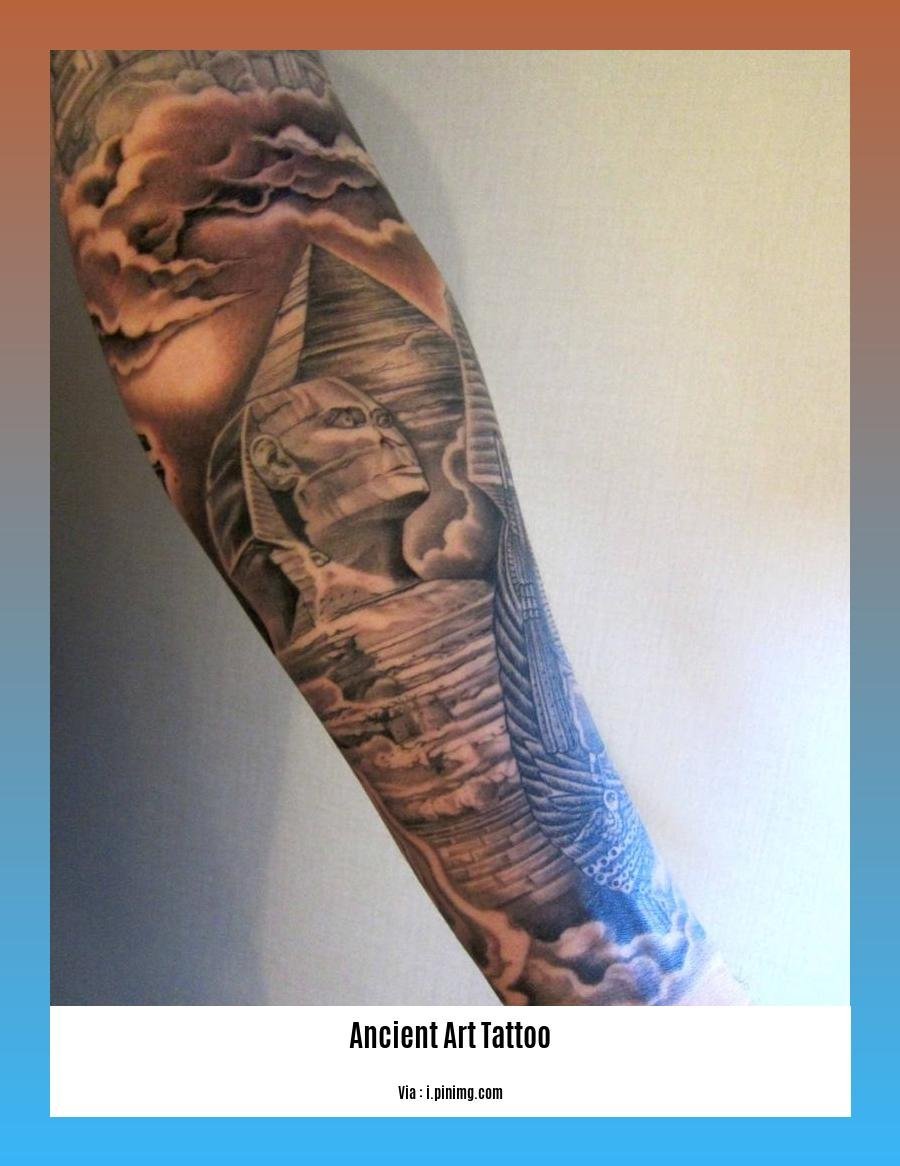
In this comprehensive guide, we’ll delve into the captivating realm of ancient art tattoos, unveiling their rich history, cultural significance, and enduring allure. Our journey will traverse time and continents, exploring the diverse expressions of this ancient art form.
The Dawn of Tattooing: Unveiling Ancient Traditions
Tattooing, an art form with raíces extending to the dawn of humanity, has graced the bodies of countless individuals throughout history. From the enigmatic Ötzi the Iceman, whose preserved remains revealed elaborate tattoos dating back to 3250 BCE, to the intricate designs adorning Egyptian mummies, tattoos have served as a potent form of personal expression, cultural identity, and spiritual connection.
Tattooing Across Cultures: A Tapestry of Symbolism
Across the globe, ancient art tattoos have manifested in a myriad of forms, each imbued with profound symbolism. In ancient Polynesia, intricate tribal patterns embodied ancestral lineages, while among Native American tribes, tattoos symbolized courage, status, and spiritual power. The Austronesian people adorned their bodies with tattoos that narrated tales of valor, headhunting, and spiritual beliefs.
Techniques and Tools: The Canvas of History
The methods employed to create ancient art tattoos have evolved over time, reflecting the ingenuity and resourcefulness of our ancestors. From the use of sharp bone needles and natural pigments to the innovative application of soot and ash, tattooists throughout history have masterfully transformed skin into living canvases.
The Revival of Ancient Tattoo Practices
In recent decades, there has been a resurgence of interest in ancient art tattoos, with individuals seeking to reclaim and celebrate their cultural heritage. This revival has spurred the study and preservation of traditional tattoo techniques, ensuring the continuity of this ancient art form.
Ancient Art Tattoos: A Legacy of Cultural Identity
Ancient art tattoos stand as a testament to the enduring spirit of human creativity and the profound connection between art, culture, and identity. They invite us to explore the rich tapestry of human history, appreciate the diversity of cultural expression, and marvel at the resilience of traditions that have transcended time.
Explore the heritage of whiskey making in ancient ancient age whiskey, a timeless spirit made with care.
Discover the artistry of ancient art tattoo studio, where creativity and precision intertwine to create masterpieces on skin.
Unravel the symbolism and meanings behind ancient bird symbols, connecting with the wisdom and secrets of the past.
Techniques and Methods Employed in Ancient Tattooing
In the realm of ancient art tattoos, techniques and methods employed by our ancestors reveal a captivating tapestry of ingenuity and resourcefulness. These methods, often passed down through generations, bear witness to the profound connection between art, culture, and identity.
Hand-poking: The Timeless Art of Puncturing Skin
Hand-poking stands as the most ancient and widespread method of tattooing, a technique that transcends time and cultures. Using a sharp object, such as a bone or thorn, skilled artisans meticulously puncture the skin, creating intricate designs that speak of lineage, status, and spiritual beliefs.
Scratching: Etching Designs into the Skin
Scratching, another time-honored method, involves scratching the desired design into the skin using a sharp implement. This technique, while perhaps less precise than hand-poking, yields distinctive markings that capture the essence of ancient symbolism and artistry.
Cutting: A Bold and Painstaking Technique
Cutting, a more invasive method, involves creating incisions in the skin and rubbing ink into the wounds. This technique, often used for bold and prominent designs, demands both skill and fortitude on the part of both the artist and the recipient.
Key Takeaways:
Hand-poking: Using a sharp object to puncture the skin repeatedly, creating intricate designs.
Scratching: Scratching the design into the skin with a sharp object, resulting in distinctive markings.
Cutting: Creating incisions in the skin and rubbing ink into the wounds, a bold and painful technique.
Sources:
* How Did They Do Tattoos in Ancient Times?
Revival of Ancient Tattoo Practices in Modern Times
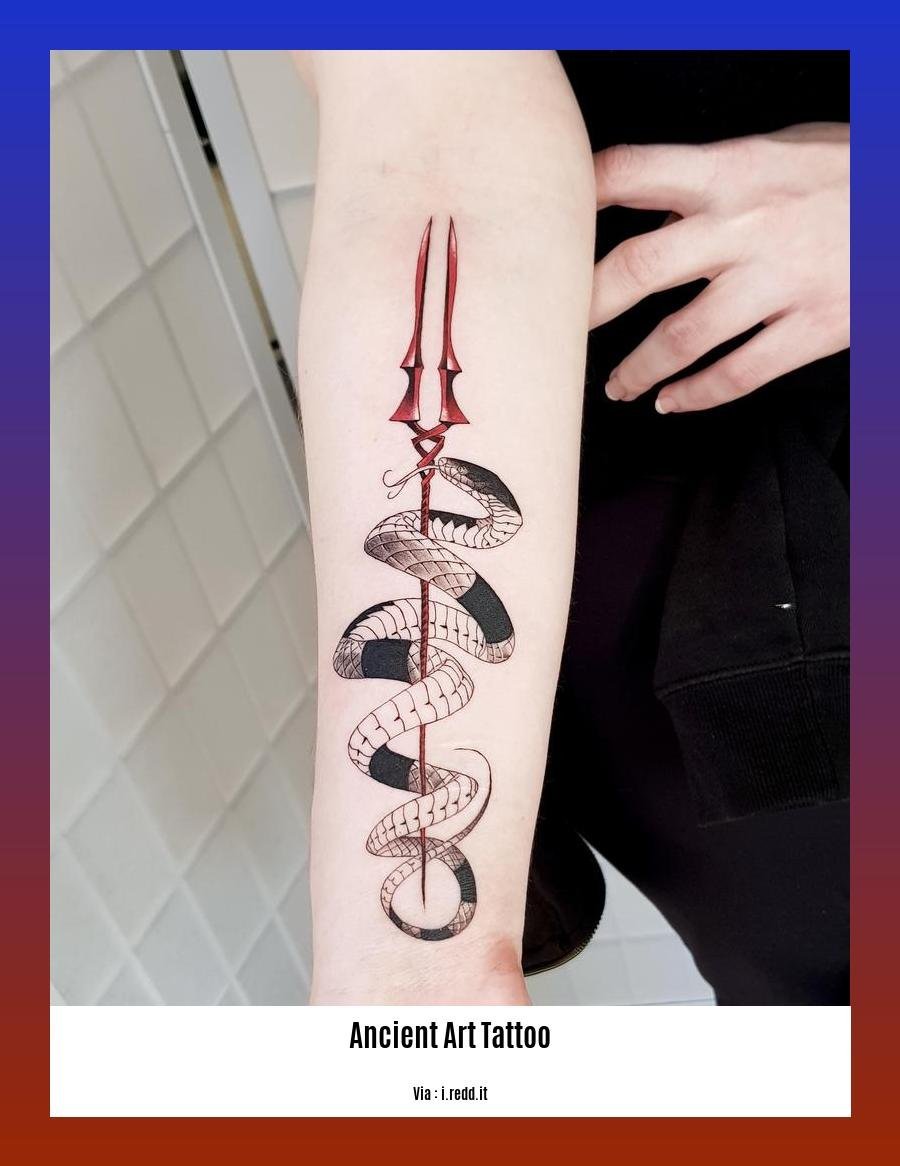
In this era of self-expression and cultural appreciation, there’s a resurgence of interest in ancient art tattoos. These timeless designs, steeped in rich symbolism and cultural heritage, are making a comeback as individuals seek to connect with their ancestral roots and honor traditions.
Key Takeaways:
- Ancient art tattoos hold profound cultural significance, symbolizing identity, status, courage, and spiritual beliefs.
- Traditional tattoo techniques involved hand-poking, scratching, and cutting the skin, using natural pigments.
- The Revival of Ancient Tattoo Practices in Modern Times is driven by a desire to reclaim cultural heritage and celebrate ancestral traditions.
- Contemporary tattoo artists are studying and preserving traditional techniques to ensure their authenticity and longevity.
- This revival fosters a greater appreciation for cultural diversity and the enduring legacy of ancient art.
Ancient Art Tattoos: A Reflection of Cultural Identity
Ancient art tattoos transcended mere decoration; they were potent symbols of cultural identity. From the intricate tribal patterns of Polynesia, representing ancestral lineage and status, to the sacred designs of Native American tribes, symbolizing courage, strength, and spiritual power, these tattoos were deeply rooted in cultural beliefs and traditions. The Revival of Ancient Tattoo Practices in Modern Times celebrates this rich diversity and encourages a deeper understanding of cultural heritage.
Preserving Traditional Techniques: A Bridge to the Past
The revival of ancient tattoo practices extends beyond the aesthetics; it embraces the preservation of traditional techniques. Contemporary tattoo artists are delving into the methods used by their ancestors, studying the art of hand-poking, scratching, and cutting, and experimenting with natural pigments to create authentic and meaningful tattoos. This dedication to preserving traditional techniques ensures the continuity of cultural practices and allows individuals to connect with the wisdom and artistry of their ancestors.
A Movement Rooted in Cultural Appreciation
The Revival of Ancient Tattoo Practices in Modern Times is more than a trend; it’s a movement fueled by cultural appreciation. Individuals are seeking to honor their cultural roots and express their connection to their heritage through these timeless designs. As a result, ancient tattoo practices are gaining recognition as legitimate forms of art and cultural expression, fostering a greater appreciation for the diversity of human cultures.
References:
The Revival of Ancient Tattooing: A Cultural Renaissance
Preservation and Conservation of Ancient Art Tattoos
Tattooing is an ancient art form with a history stretching back thousands of years. Ancient art tattoos hold cultural, historical, and aesthetic significance, providing valuable insights into the beliefs, practices, and artistic traditions of past civilizations. However, these precious relics are often fragile and require careful preservation and conservation to ensure their survival for future generations:
Key Takeaways:
- Ancient art tattoos provide a window into the cultural, historical, and artistic heritage of past societies.
- Preservation and conservation of these tattoos are crucial for safeguarding our cultural legacy.
- Proper handling, storage, and restoration techniques help protect ancient art tattoos from deterioration.
- Collaboration among conservators, archaeologists, and cultural institutions is essential for effective preservation.
- Ongoing research and technological advancements contribute to the development of innovative conservation methods.
- Public awareness and education play a vital role in promoting the importance of preserving ancient art tattoos.
Challenges in Preserving Ancient Art Tattoos:
- Fragility and Deterioration: Ancient tattoos are often found on mummified remains or archaeological artifacts that are susceptible to decay.
- Environmental Factors: Exposure to light, moisture, and temperature fluctuations can accelerate the degradation process.
- Human Handling: Improper handling and storage can cause damage to delicate tattoos.
- Lack of Documentation: Insufficient documentation or records can make it difficult to understand the context and significance of the tattoos.
Preservation and Conservation Techniques:
- Proper Storage and Handling: Maintaining stable environmental conditions, using appropriate storage materials, and handling artifacts with care can help prevent further damage.
- Restoration and Conservation Treatments: Conservators use specialized techniques to stabilize, repair, and restore damaged tattoos, ensuring their longevity.
- Documentation and Research: Detailed documentation and research help conservators understand the materials, techniques, and cultural significance of ancient tattoos.
- Collaboration and Partnerships: Collaboration among conservators, archaeologists, and cultural institutions facilitates the sharing of knowledge and resources for effective preservation.
- Technological Advancements: Ongoing research and technological advancements, such as digital imaging and 3D scanning, aid in the study and preservation of ancient art tattoos.
Public Awareness and Education:
- Raising Awareness: Public awareness campaigns and educational programs can help raise awareness about the importance of preserving ancient art tattoos.
- Engaging the Public: Engaging the public through museum exhibits, documentaries, and online resources can foster appreciation and understanding of these cultural treasures.
- Responsible Tourism: Promoting responsible tourism practices can help protect archaeological sites and artifacts from damage.
Conclusion:
Preservation and conservation of ancient art tattoos are essential for safeguarding our cultural heritage and ensuring that these precious relics can continue to inform and inspire future generations. By employing appropriate techniques, fostering collaboration, raising public awareness, and promoting responsible tourism, we can collectively work towards preserving these timeless works of art.
Sources:
- Preservation and Conservation of Ancient Art Tattoos
- The Importance of Preserving Ancient Art Tattoos
FAQ
Q1: How old is the oldest known tattoo?
A1: The oldest known tattoo dates back to 3250 BCE and was found on the preserved remains of Ötzi, a man discovered in the Alps.
Q2: What were the common methods used for ancient tattooing?
A2: Ancient tattooing methods included hand-poking, scratching, and cutting, with ink rubbed into the wound to create permanent designs.
Q3: What significance did ancient tattoos hold?
A3: Tattoos in ancient cultures held various meanings, including religious rituals, social status, protection, and rites of passage.
Q4: Why is the preservation of ancient art tattoos important?
A4: Preserving ancient art tattoos is crucial for understanding cultural heritage, studying the evolution of tattooing practices, and gaining insights into ancient beliefs and customs.
Q5: How can we approach the preservation of ancient art tattoos respectfully and sensitively?
A5: It is important to approach the preservation of ancient art tattoos with respect and sensitivity, considering their cultural significance and fragility, ensuring proper handling and storage techniques to maintain their integrity.
